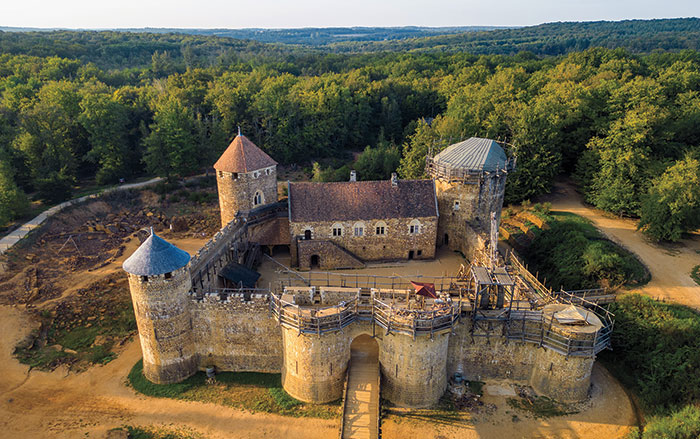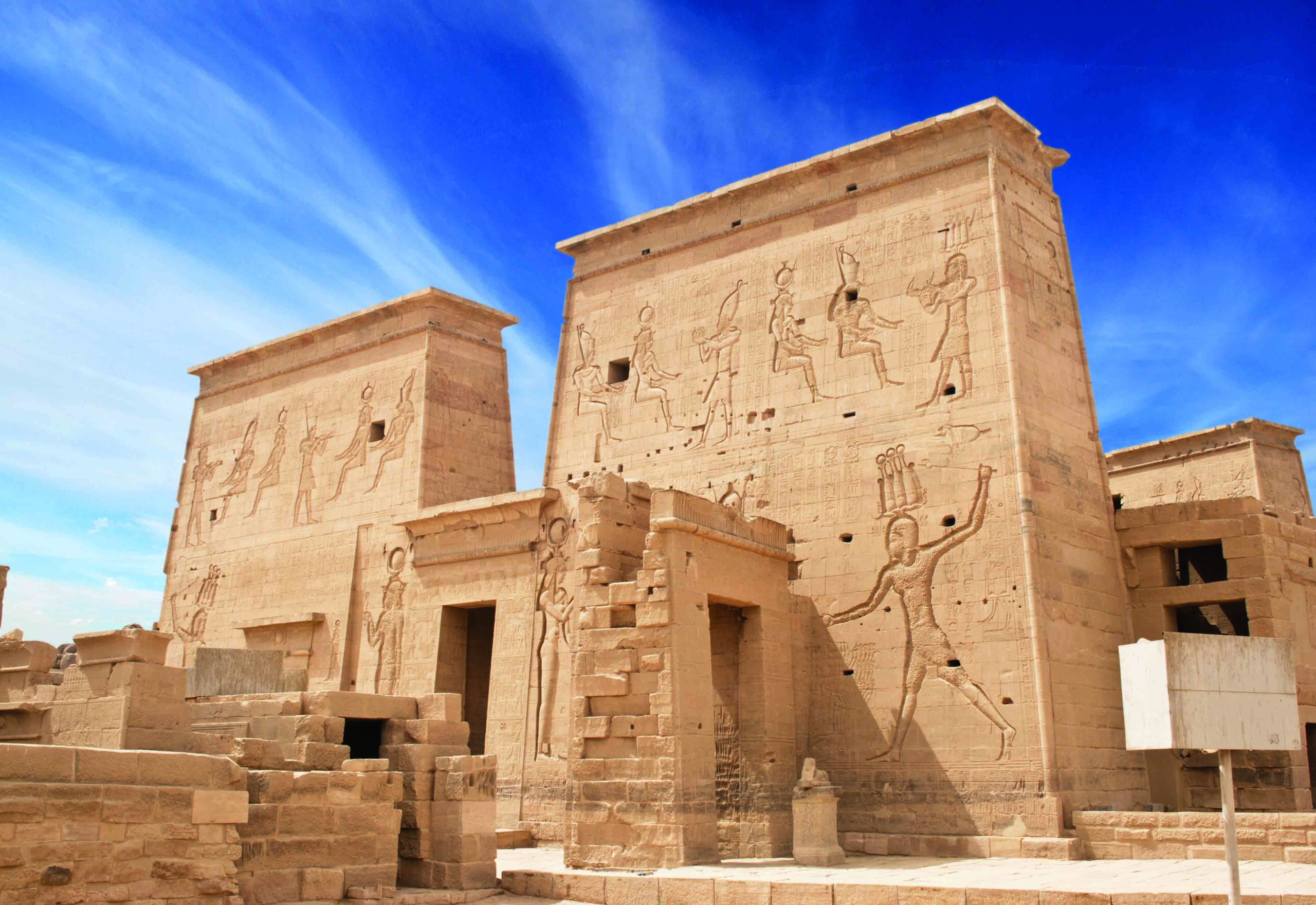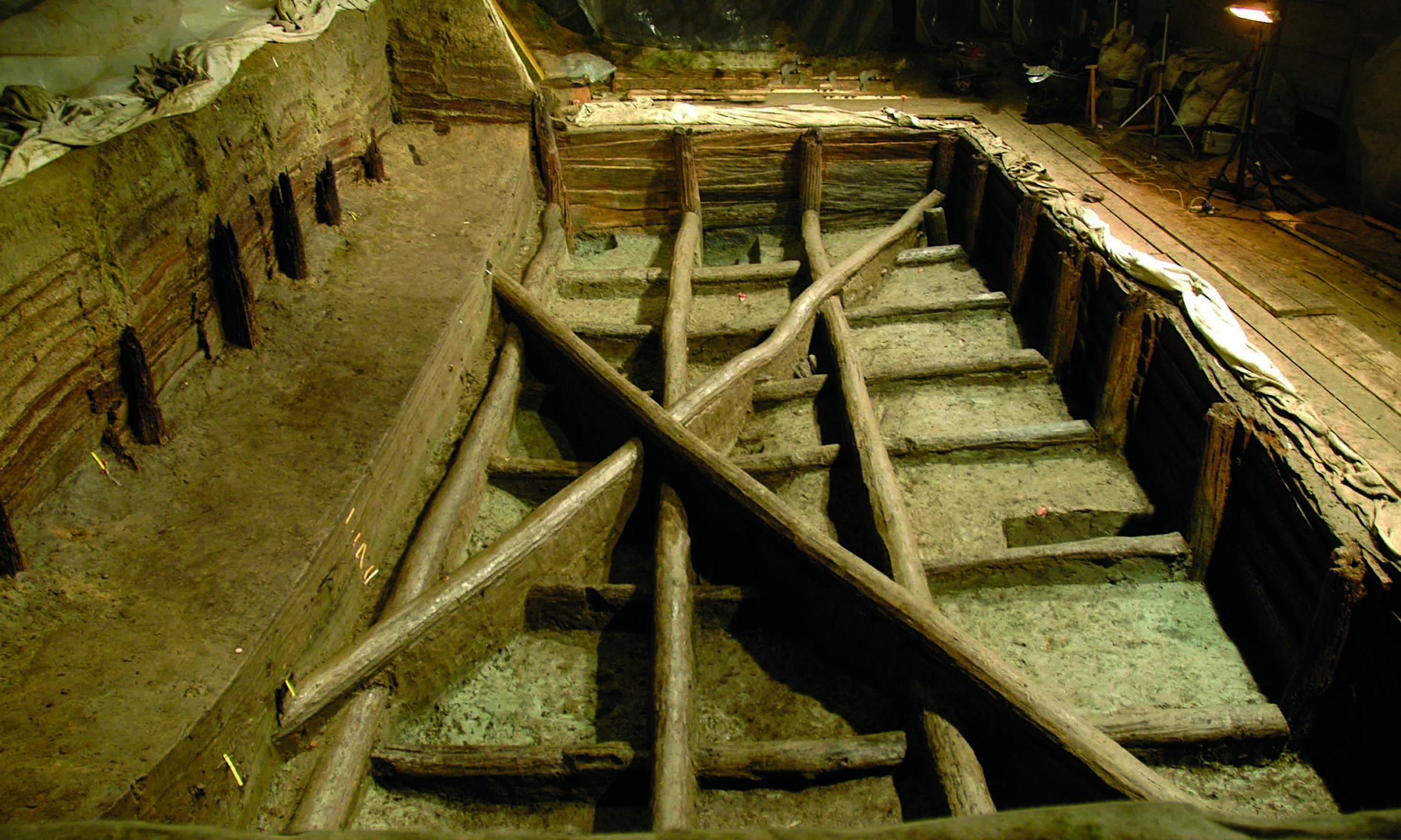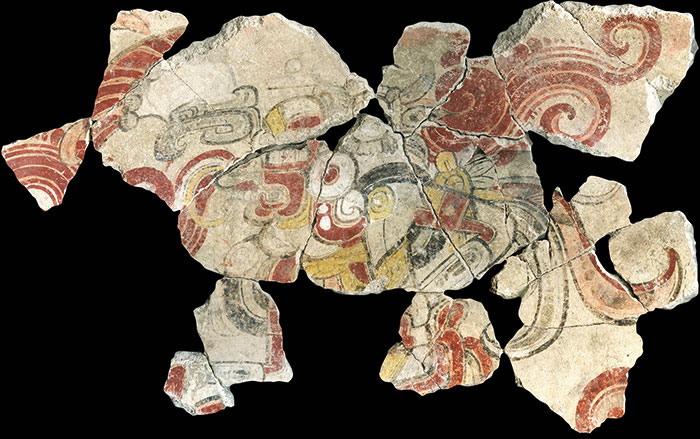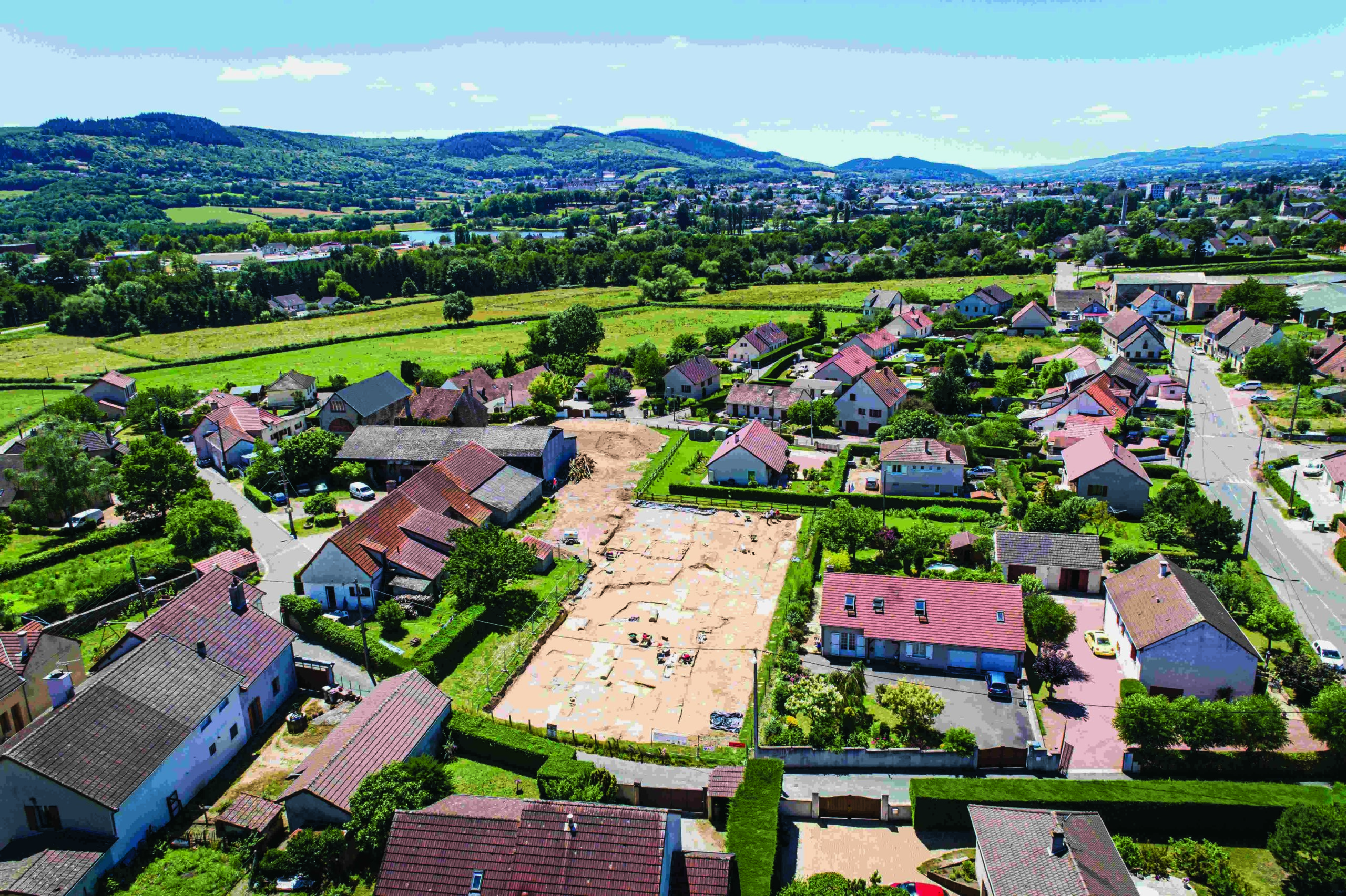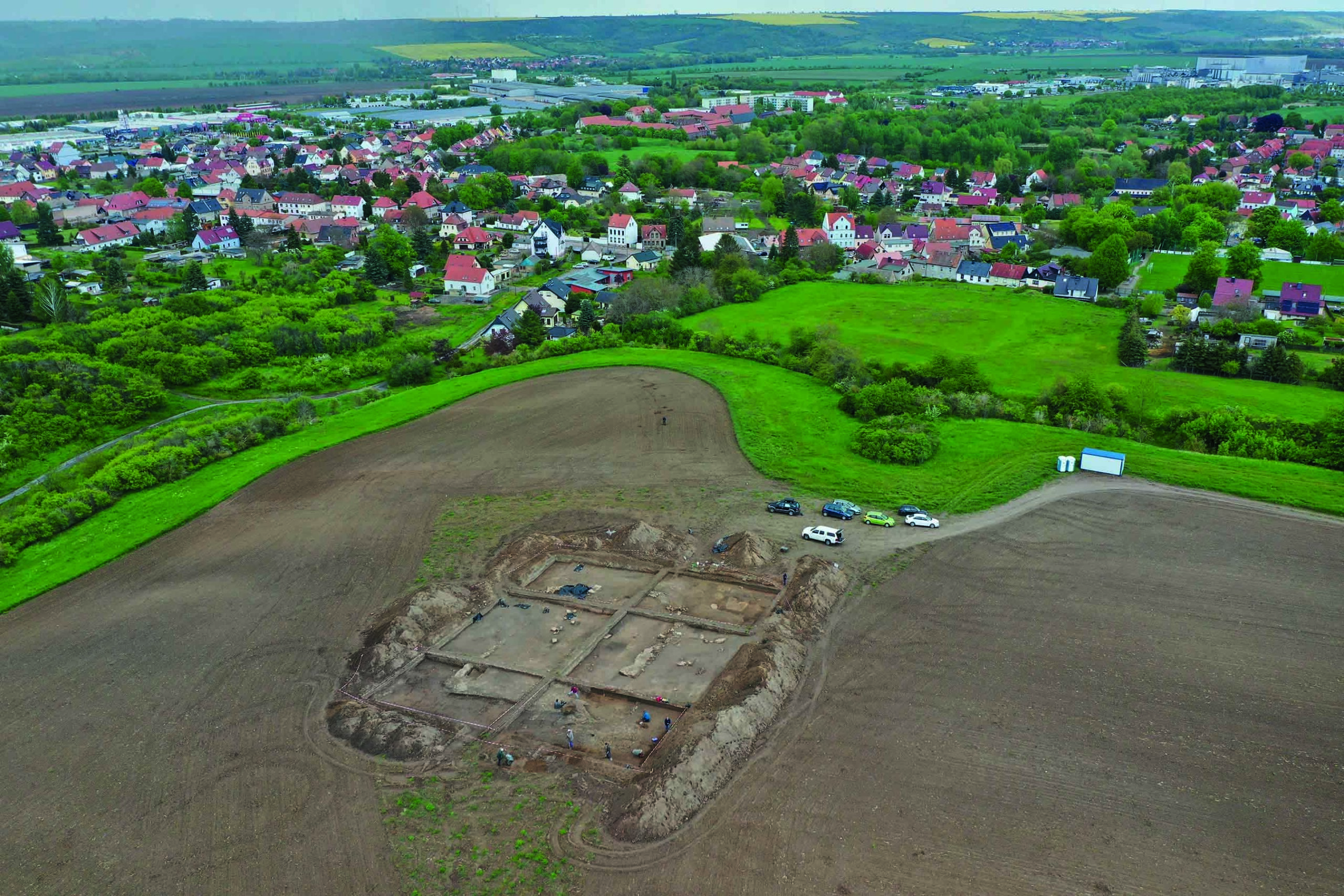

On a hill overlooking the village of Helfta, Germany, archaeologists have unearthed the remains of a cross-shaped stone basilica commissioned by Otto the Great, ruler of the Eastern Frankish Kingdom (r. A.D. 936–973) and the Holy Roman Empire (r. A.D. 962–973). Medieval chronicles record that the church was built sometime before A.D. 968 and dedicated to Saint Radegundis, a sixth-century A.D. princess who established the first women’s monastery in France. The structure, which had three aisles and measured about 100 feet long and 65 feet wide, once stood at the center of a fortified settlement that served as a royal palace for Otto and his successors. “This site was one of many palaces where kings and emperors resided,” says archaeologist Felix Biermann of the State Office for Heritage Management and Archaeology Saxony-Anhalt. “Because they had no capital cities, they would move from place to place every month or two.” It’s unclear how much time Otto spent at this particular palace, though an eleventh-century chronicle mentions that he was at least present for the church’s inaugural services.
The settlement was abandoned in the thirteenth century, but the church continued to be used until its destruction in the fifteenth or sixteenth century. Inside and around the building, archaeologists have already excavated more than 300 burials, many of them belonging to members of noble families, including children. Several graves contained earrings, pins, and enameled brooches. Among the artifacts recovered from the church are a thirteenth-century enameled bronze crucifix and a fragment of a church bell.






